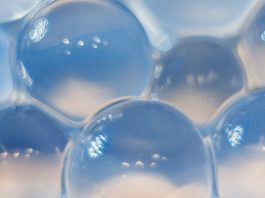Engineers from the University of Houston (UH) have discovered that they can create upward water fountains by shining laser beams on the water’s surface.
What is the Marangoni effect?
The Marangoni effect was first discovered in the 1860s; it is known to cause convection and explains the behaviour of water when the differences in surface tension are apparent. Its application in various fluid dynamics is often described by sprinkling pepper into a bowl of water. Then one drop of detergent, such as dishwasher soap, is squeezed into the middle of the bowl. When this is done, the pepper will disperse and scatter quickly to the sides of the bowl.
Recent studies have revealed that the Marangoni effect’s laser-induced liquid fountains have the potential to impact applications involving liquids or soft matters such as, lithography and 3D printing, heat transfer, and adaptive optics.
How did this contribute to the upward water fountain?
Jiming Bao, professor of electrical and computer engineering at UH, and his postdoctoral student Feng Lin, attribute their findings to this phenomenon. Bao commented: “Scientifically no one has predicted or imagined this kind of upward deformation before. It is well known that an outward Marangoni convection from a low surface tension region will make the free surface of a liquid depressed.
“Here, we report that this established perception is only valid for thin liquid films. Using surface laser heating, we show that in deep liquids a laser beam pulls up the fluid above the free surface generating fountains with different shapes.”
Bao’s past research and how it influenced this study
It was Bao’s previous work on the stimulation of inward surface depression in a shallow liquid, that inspired him to increase the depth of the ferrofluid in the current study’s simulation. Ferrofluid is considered a ‘magic’ liquid within the scientific community and is most commonly known for its astounding surface spikes that are generated by a magnet.
“Understanding the distinct surface deformation in liquids with different depths helps unravel the dynamics of the surface deformation process,” explained Bao.
Bao used a low-power (<1 W) continuous-wave laser beam to create a non-uniform surface temperature field to induce the Marangoni effect. To understand the distinct deformations between deep and shallow liquids, he varied the liquid layer thickness while keeping the laser beam at a constant <1 W.
The laser fountains and the depth-dependent transition from surface indentation to laser fountain have never been reported, likely due to the lack of anticipation by any existing theory.
“We emphasise that there have been numerous attempts to understand the Marangoni flow-driven surface deformation, but no existing theory can predict the deformation patterns of a liquid with an arbitrary depth in a straightforward manner,” concluded Bao.









